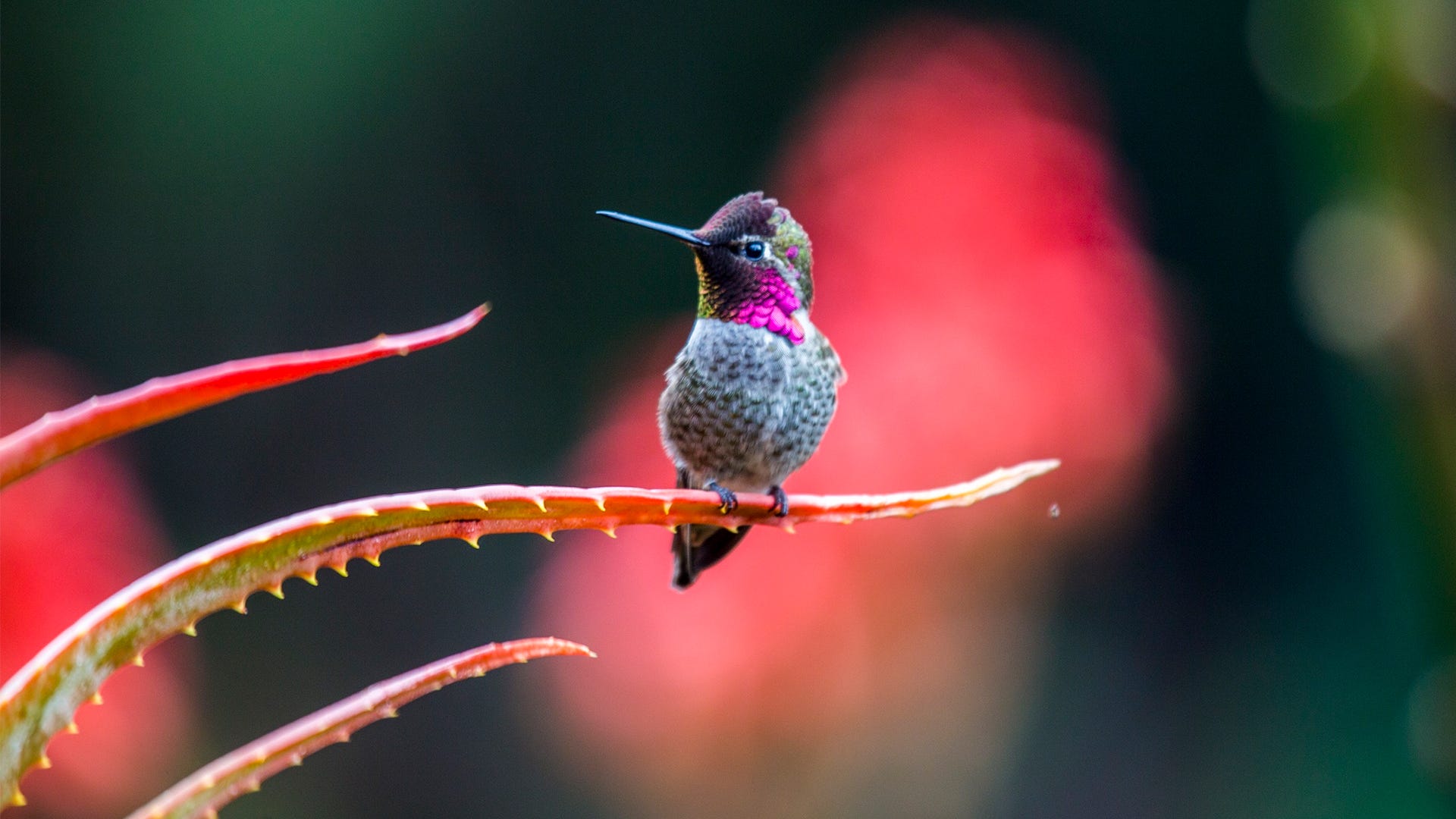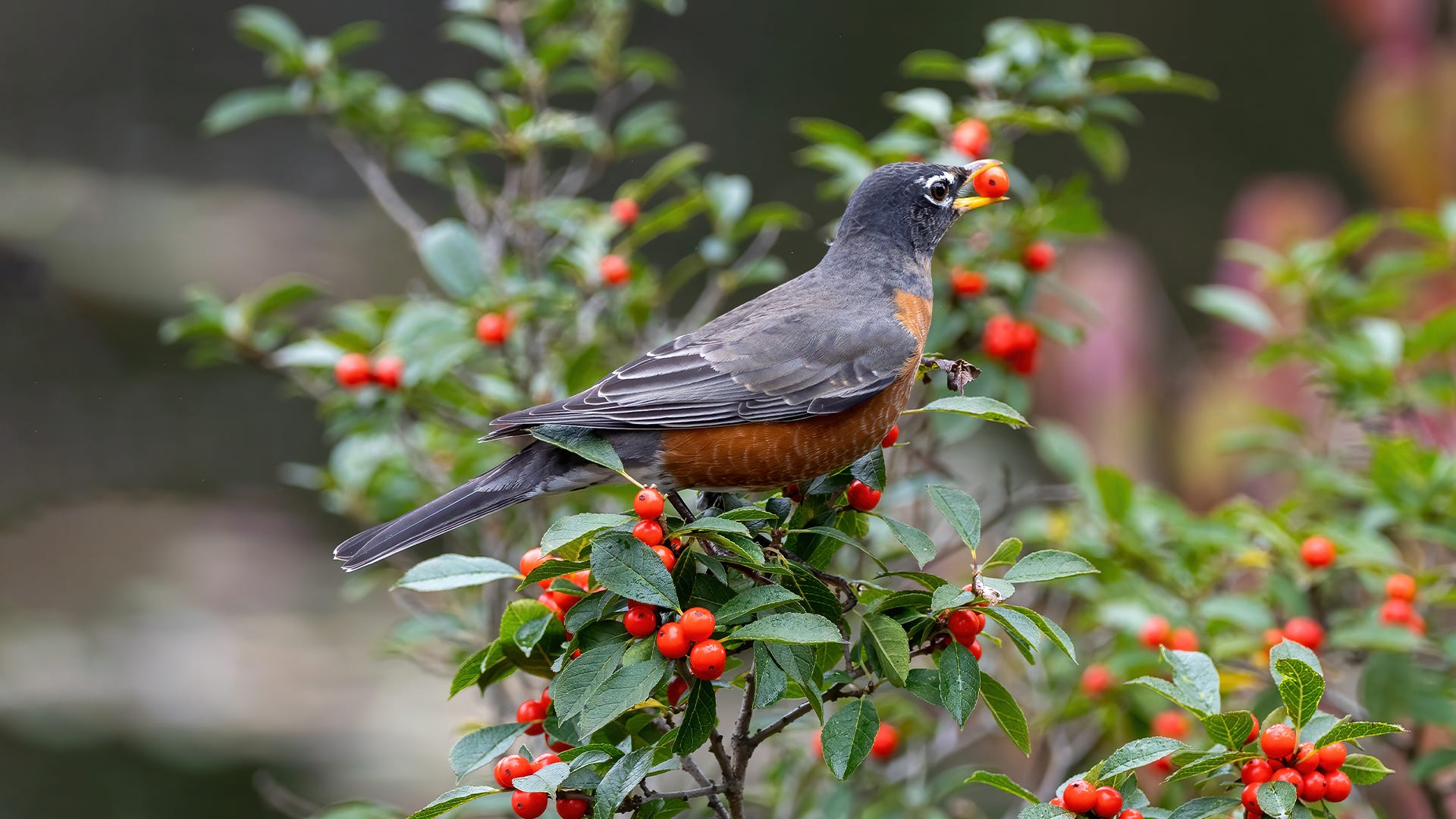
It’s hummingbird migration season, and these tiny flying jewels are busy fueling up for their journey. You can definitely do your part to help by putting out nectar feeders and keeping them filled and fresh.
But first, take a look at these incredible facts about the backyard favorite!
1. Hummingbirds Need to Double Their Weight for Migration
During the regular season, hummingbirds already eat about twice their weight in food, between nectar and insects. During migration, they have to increase their intake even more, storing extra fat for days before they take off on their journey. This process is called hyperphagia.
2. Hummingbirds Can Fly Up to 20 Hours a Day (or 500 Miles) During Migration
All that fueling up on fat really comes in handy. During the migration seasons, hummingbirds use all that stored fat to travel great distances. Sure, they stop along the way for refueling, but the initial storing of fat is really important.
3. They Don’t Fly in Flocks (or on the Backs of Geese)
When you think of migration, it’s easy to imagine a group of birds all traveling together like geese. This isn’t the case for hummingbirds, though. They are solo travelers, for the most part. And they do not travel on the backs of geese for a free ride. This myth gets circulated every year, and as funny as it might be to imagine, it’s just not true.

4. Hummingbirds Migrate Based on Environmental Triggers
Every year, there seems to be another myth floating around that says hummingbirds migrate once you take your feeders down. There are even warnings to take them down on time or else hummingbird migration will be delayed. This is not true at all. Hummingbirds pay attention to things like sunshine and shorter days—not when you take your feeder down.
5. Fall Migration Can Be as Early as July or as Late as October
Fall migration includes such a wide range, there is really no exact cutoff date. If you want to follow
along with exact hummingbird migration dates, check out our migration map. Ornithologists will recommend you
leave your feeders up late into fall just in case there are any stragglers passing through your area.
6. Spring Migration Will Have Hummingbirds Showing Up as Early as March or as Late as May
A sure sign of spring is seeing your first hummingbird at the feeder. You can actually get a really good idea of when to look for hummingbirds in your area, even within a week or a few days. Follow along with the migration map so you can be ready.
7. If You Can’t Seem to Attract Hummingbirds, Migration Is One of the Best Times to Try
Do you have trouble attracting hummingbirds? If so, then you definitely want to put feeders out during migration. During these times, you can often attract those passing through, even if you can’t get hummingbirds regularly during summer.
8. Hummingbirds Will Often Return to the Same Location Year After Year
This is such an amazing and fascinating fact. It doesn’t seem like it can be true, but it definitely is. Banding research has shown hummingbirds showing up in the same location and even on the same day from one year to the next. Juveniles have an instinct about where they were hatched, and they will go back because they know it’s a good place for food.
9. When Flying, Hummingbirds Can Reach Up to 35 mph
If you want to compare this to other birds, ducks can reach up to 60 mph at top speed. The fastest bird, the peregrine falcon, can get up to 200 mph. Of course, both of these are during dives or chases. So an average of 35 mph isn’t bad for such a tiny bird.

10. Rufous Hummingbirds Have the Longest Migration of 3,000 Miles
Most of the hummingbirds you see in North America will winter in Mexico and south down to Panama. This is true for the rufous as well. Because this hummingbird nests farther north than any other hummingbird in Alaska, it wins the award of going the longest for migration among hummingbirds.
11. Males Will Often Migrate First, Followed by Females and Juveniles
The males definitely take off first. Since they tend to be a bit territorial during the regular season, this can be a good thing. When the males are gone, you will see multiple hummingbirds (often juveniles) feeding at a single hummingbird feeder. This doesn’t usually happen during the regular season because the male will be standing guard and will chase others away. Yet another good reason why fall migration is a good time to try to attract hummingbirds.
12. If Temperatures Drop, Hummingbirds Go into a State of Torpor During Migration
Torpor is a wonderful, magical thing for hummingbirds. During cooler temperatures, they will enter this state, which slows down their metabolism. It’s similar to hibernation, and it allows hummingbirds to slow their heartbeat (to about 50 beats per minute) and conserve energy. This is really handy during migration season when they need all the energy they can get.







